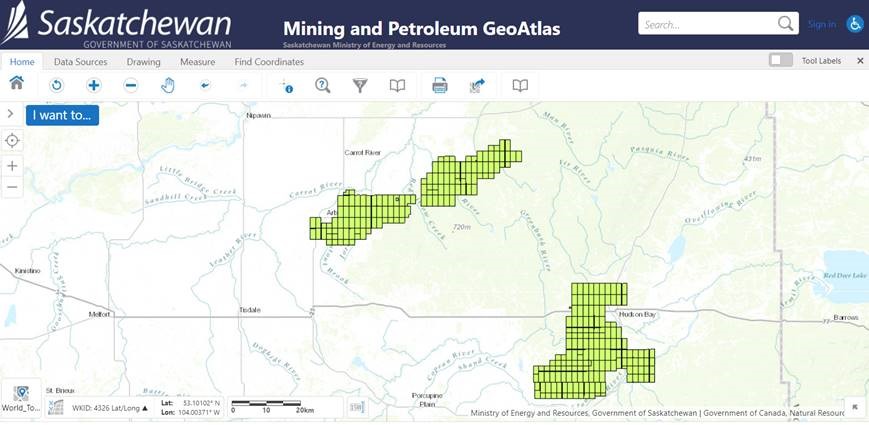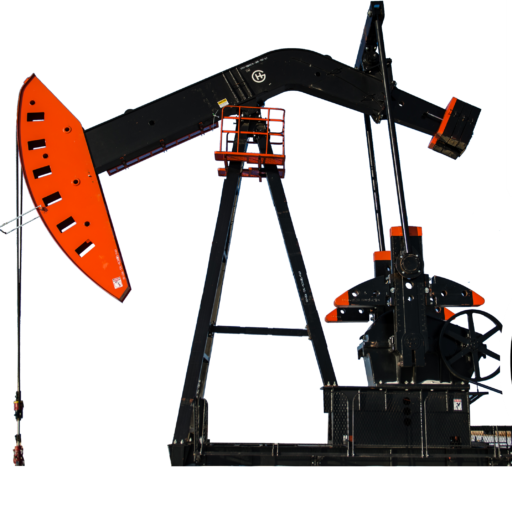Brian Zinchuk is editor and owner of Pipeline Online

Oil shale leases issued from the August sale are located in the north-west block near Arborfield. The remainder of the oil shale leases shown to the north, west and south of Hudson Bay were issued prior to the August sale between 2009 and 2020. In the Arborfield block there is one lease that was issued back in 2013, which is why the Ministry can’t say that block was entirely acquired in the August sale. This caption has been corrected. See correction at the bottom of the story. Map courtesy Ministry of Energy and Resources
Oil shale leases featured prominently in the August, 2021, Crown petroleum mineral rights sales. Pipeline Online reached out to the Ministry of Energy and Resources to provide some context of what it all means. On Oct 14, Melinda Yurkowski, assistant chief geologist, Saskatchewan Geological Survey, and Paul Mahnic, director of Technical Services, Lands and Mineral Tenure, responded by email.
Pipeline Online: The August land sale was notable for having $2 million in oil shale for 25 oil shale leases in the Arborfield area of Saskatchewan. What exactly is oil shale? What is it used for?
Melinda Yurkowski: Oil shale is rock that contains organic sedimentary material called kerogen that can be converted into petroleum when heated. Oil shales are different from the source rocks that generate oil and gas because they have not been exposed to pressures (from deep burial) and temperatures (produced from the earth’s interior) that convert the kerogen into oil. Oil produced from oil shale is used to create superior quality jet fuel, #2 diesel fuel, and other high value by-products such as petrochemical feedstock for the plastics industry.
Pipeline Online: Is it anything like oilsands?
Yurkowski: Oil shale and oil sands are not alike. Oil sands are made of a mixture of sand, water and bitumen, which is a form of oil that is too heavy to flow without the assistance of extraction technology. Oil shale is rock that contains organic material called kerogen that can be converted into petroleum when heated.
Pipeline Online: What’s the difference between shale oil and oil shale? Is there a difference?

Melinda Yurkdowski
Yurkowski: Shale oil is an oil shale rock that has undergone the required heating to convert kerogen into hydrocarbons. Shale oil requires advanced horizontal drilling techniques and hydraulic fracturing for its extraction. The Marcellus shale in the Appalachian region or the Bakken Formation shale in southern Saskatchewan and North Dakota are two examples of shale oil reservoirs.
Pipeline Online: Is it surface mined or drilled?
Yurkowski: Extracting oil from oil shale rock requires a heating process called pyrolysis, which can be done either above ground or below ground. In the above ground process, oil shale rock is mined from the ground, crushed, and then heated to extremely high temperatures to release the shale oil. The shale oil is then refined to remove impurities. For the below ground process, the oil shale rock is heated to its oil window while it is still underground, and then the resulting liquid is pumped out of the reservoir.
Pipeline Online: Is there any oil shale development in Saskatchewan? Has there ever been?
Yurkowski: There isn’t oil shale development in Saskatchewan now nor has there been in the past.
- 0098 SASPO-2874_Self Serve Campaign_New Connects_Youtube_v30098 SASPO-2874_Self Serve Campaign_New Connects_Youtube_v3
- 0100 Turnbull Project Manager0100 Turnbull Project Manager
- 0099 Mryglod Steel 1080p0099 Mryglod Steel 1080p
- 0097 Eagle Sky Ventures LTD0097 Eagle Sky Ventures LTD
- 0095 Fast Trucking nearly 70 years good at it0095 Fast Trucking nearly 70 years good at it
- 0053 Kingston Midstream Westspur Alameda Click Before You Dig0053 Kingston Midstream Westspur Alameda Click Before You Dig
- 0092 Turnbull projects big and small0092 Turnbull projects big and small
- 0046 City of Estevan This is Estevan Teaser0046 City of Estevan This is Estevan Teaser
- 0087 Lori Carr Coal Expansion0087 Lori Carr Coal Expansion
- 0077 Caprice Resources Stand Up For Free Speech0077 Caprice Resources Stand Up For Free Speech
- 0076 Latus only0076 Latus only
- 0061 SIMSA 2024 For Sask Buy Sask0061 SIMSA 2024 For Sask Buy Sask
- 0055 Smart Power Be Smart with your Power office0055 Smart Power Be Smart with your Power office
- 0051 JML Hiring Pumpjack assembly0051 JML Hiring Pumpjack assembly
- 0049 Scotsburn Dental soft guitar0049 Scotsburn Dental soft guitar
- 0041 DEEP Since 2018 now we are going to build0041 DEEP Since 2018 now we are going to build
- 0032 IWS Summer hiring rock trailer music
- 0022 Grimes winter hiring
- 0021 OSY Rentals S8 Promo
- 0018 IWS Hiring Royal Summer
- 0013 Panther Drilling PO ad 03 top drive rigs
- 0006 JK Junior
- 0002 gilliss casing services0002 gilliss casing services
- 9002 Pipeline Online 30 sec EBEX9002 Pipeline Online 30 sec EBEX
- 9001
Pipeline Online: Isn’t there oil shale that’s been developed in Colorado or Utah? Isn’t it tremendously expensive to produce, more than even the oilsands, per barrel?
Yurkowski: There are oil shale deposits in both Colorado and Utah but commercial production has not yet happened. This could be related to costs associated with its development and oil market volatility. Successful production from oil shale resources is likely reliant on factors such as the cost of a barrel, market stability, and steady demand.
Pipeline Online: Geologically, Arborfield is an awful long way from any existing oil development. Why Arborfield, of all places?
Yurkowski: Oil shale rocks found within Saskatchewan’s Pasquia Hills extend west into Arborfield.
The Arborfield region has been tested for rare earth elements (REE). REE are naturally occurring minerals that are expected to be increasingly in demand because they are needed in the manufacturing of electronics, electric vehicles and renewable power infrastructure. The Government of Saskatchewan is spending $31 million on the Saskatchewan Research Council’s Rare Earth Processing Facility to develop this resource and create a critical minerals supply chain.
In 2016, the Saskatchewan Geological Survey published a study discussing REE in the Upper Cretaceous Oil Shales in the Arborfield region. Current interest in Arborfield oil shale may be attributable to information found in this report, which can be found here: Publication Centre (saskatchewan.ca)
Oil Shale dispositions include the right to all minerals and substances that may be recovered when processing oil shale and thus would support a co-production approach.
Pipeline Online: Aren’t there oilsands or something similar east of Hudson Bay?
Yurkowski: The ‘oilsands’ in Saskatchewan are restricted to the western half of the province and are found beneath the Cretaceous shales.
Cretaceous shales that may be targeted for oil shale production exist across western Canada. However, for specific information related to the area east of Hudson Bay, you’d likely need to contact the Manitoba Geological Survey.

Paul Mahnic
Pipeline Online: On the tenure side, is there anything different for oil shale leases compared to typical oil permits or leases?
Paul Mahnic: An oil shale lease has a primary term of 15 years while the primary term for a petroleum and natural gas lease is five years. Another difference is the maximum size for an oil shale lease is 36 surveyed sections compared to 12.25 surveyed sections for a petroleum and natural gas lease. The additional 10 years for the primary term of an oil shale lease is meant to acknowledge that there has never been an oil shale industry in Saskatchewan, which means the lessee may need more time to raise the necessary capital and to determine which methodology for extracting oil shale products is the most cost-effective.
Pipeline Online: Have we had this sort of money spent on oil shale leases before? Were these renewals or brand new?
Mahnic: Prior to October 2016, oil shale leases and permits were acquired through an application process that did not require a bonus bid. Sixteen of the 47 active oil shale leases were converted from permits acquired under this old application process and did not require bonus bids.
The other 31 active oil shale leases were acquired through the land sale process. They include six oil shale leases that received bids of $25,000 each for a total of $150,000 in the December 2020 land sale and 25 leases acquired in the August 2021 sale that raised $2,000,000. The 47 leases comprise a total of 122,356 hectares.
Pipeline Online: What sort of work do you have to do to prove up an oil shale lease?
Mahnic: A special exploratory permit or a lease can be acquired for oil shale tenure. Oil shale special exploratory permits provide the right to explore for, but not develop, oil shale. They are acquired through a work commitment bid process and are best suited to areas that are under-explored.
Oil shale leases, which provide the right to develop oil shale and oil shale products, are acquired through the cash bonus bid process and are located in areas that have identified the presence of prospective oil shale resources. Similar to petroleum and natural gas leases, there is no requirement to prove up an oil shale lease. The understanding is that the resource has already been identified, either through exploratory work conducted under a special exploratory permit or through a review of available data, and the lessee will work towards developing the resource.
A lessee may choose to ‘sit on’ the lease for the duration of the primary term of the lease provided they pay the annual lease rental. However, at the expiry of the primary term the lease will be subject to an annual lease review and any lands that are not actively being produced or under unit operation will be terminated.
CORRECTION: The map caption originally said, “Oil shale leases in August sale. The right-hand block surrounds the north, west and south of Hudson Bay.” It has been updated to say, “Oil shale leases issued from the August sale are located in the north-west block near Arborfield. The remainder of the oil shale leases shown to the north, west and south of Hudson Bay were issued prior to the August sale between 2009 and 2020. In the Arborfield block there is one lease that was issued back in 2013, which is why the Ministry can’t say that block was entirely acquired in the August sale.”
- 0098 SASPO-2874_Self Serve Campaign_New Connects_Youtube_v30098 SASPO-2874_Self Serve Campaign_New Connects_Youtube_v3
- 0100 Turnbull Project Manager0100 Turnbull Project Manager
- 0099 Mryglod Steel 1080p0099 Mryglod Steel 1080p
- 0097 Eagle Sky Ventures LTD0097 Eagle Sky Ventures LTD
- 0095 Fast Trucking nearly 70 years good at it0095 Fast Trucking nearly 70 years good at it
- 0053 Kingston Midstream Westspur Alameda Click Before You Dig0053 Kingston Midstream Westspur Alameda Click Before You Dig
- 0092 Turnbull projects big and small0092 Turnbull projects big and small
- 0046 City of Estevan This is Estevan Teaser0046 City of Estevan This is Estevan Teaser
- 0087 Lori Carr Coal Expansion0087 Lori Carr Coal Expansion
- 0077 Caprice Resources Stand Up For Free Speech0077 Caprice Resources Stand Up For Free Speech
- 0076 Latus only0076 Latus only
- 0061 SIMSA 2024 For Sask Buy Sask0061 SIMSA 2024 For Sask Buy Sask
- 0055 Smart Power Be Smart with your Power office0055 Smart Power Be Smart with your Power office
- 0051 JML Hiring Pumpjack assembly0051 JML Hiring Pumpjack assembly
- 0049 Scotsburn Dental soft guitar0049 Scotsburn Dental soft guitar
- 0041 DEEP Since 2018 now we are going to build0041 DEEP Since 2018 now we are going to build
- 0032 IWS Summer hiring rock trailer music
- 0022 Grimes winter hiring
- 0021 OSY Rentals S8 Promo
- 0018 IWS Hiring Royal Summer
- 0013 Panther Drilling PO ad 03 top drive rigs
- 0006 JK Junior
- 0002 gilliss casing services0002 gilliss casing services
- 9002 Pipeline Online 30 sec EBEX9002 Pipeline Online 30 sec EBEX
- 9001
